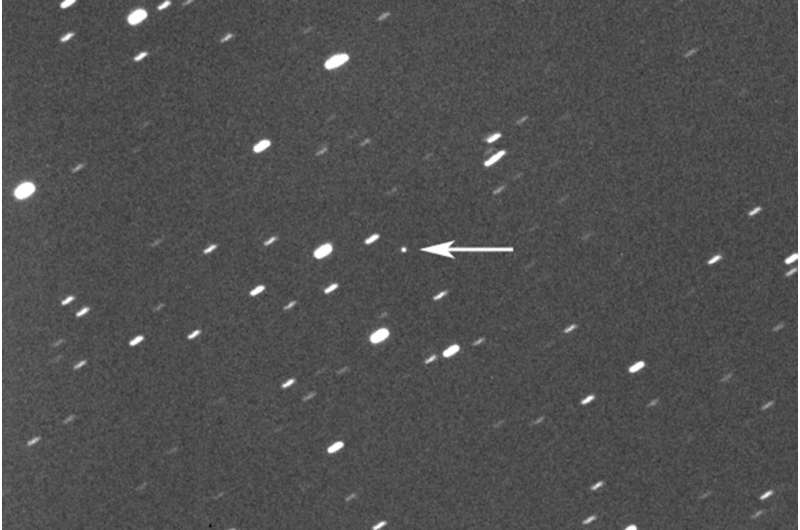Large asteroid coming close, but zero chance of hitting us

An asteroid big enough to wipe out a city will zip harmlessly between Earth and the moon’s orbit this weekend, missing both celestial bodies.
Saturday’s close encounter will offer astronomers the chance to study a space rock from just over 100,000 miles (168,000 kilometers) away. That’s less than half the distance from here to the moon, making it visible through binoculars and small telescopes.
While asteroid flybys are common, NASA said it’s rare for one so big to come so close—about once a decade. Scientists estimate its size somewhere between 130 feet and 300 feet (40 meters and 90 meters).
Discovered a month ago, the asteroid known as 2023 DZ2 will pass within 320,000 miles (515,000 kilometers) of the moon on Saturday and, several hours later, buzz the Indian Ocean at about 17,500 mph (28,000 kph).
“There is no chance of this ‘city killer’ striking Earth, but its close approach offers a great opportunity for observations,” the European Space Agency’s planetary defense chief Richard Moissl said in a statement.
Astronomers with the International Asteroid Warning Network see it as good practice for planetary defense if and when a dangerous asteroid heads our way, according to NASA.
The Virtual Telescope Project will provide a live webcast of the close approach.
The asteroid won’t be back our way again until 2026. Although there initially seemed to be a slight chance it might strike Earth then, scientists have since ruled that out.
© 2023 The Associated Press. All rights reserved. This material may not be published, broadcast, rewritten or redistributed without permission.
Citation:
Large asteroid coming close, but zero chance of hitting us (2023, March 23)
retrieved 24 March 2023
from https://phys.org/news/2023-03-large-asteroid-chance.html
This document is subject to copyright. Apart from any fair dealing for the purpose of private study or research, no
part may be reproduced without the written permission. The content is provided for information purposes only.
For all the latest Science News Click Here
For the latest news and updates, follow us on Google News.

